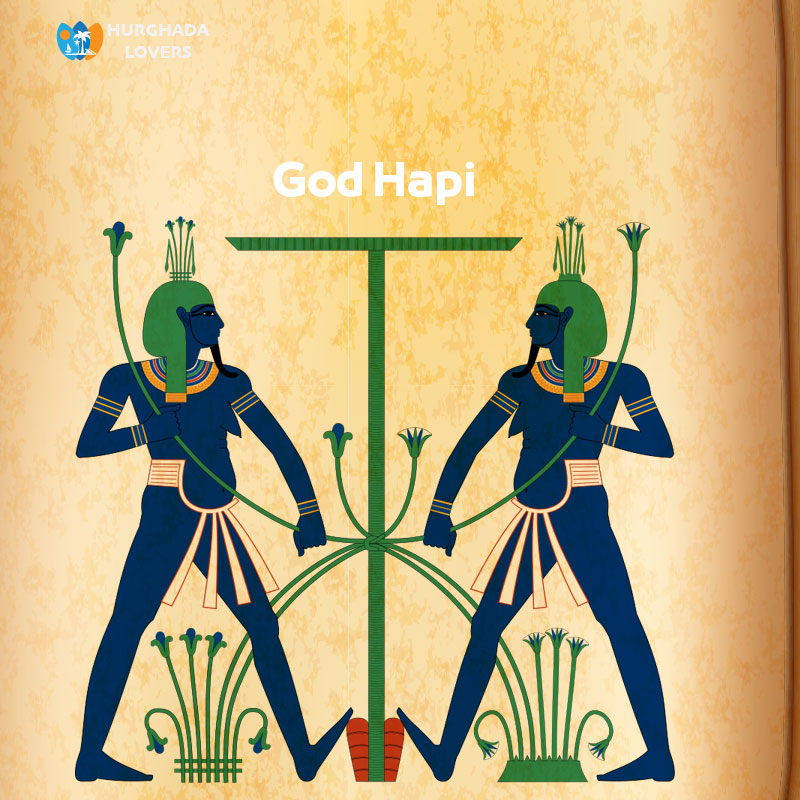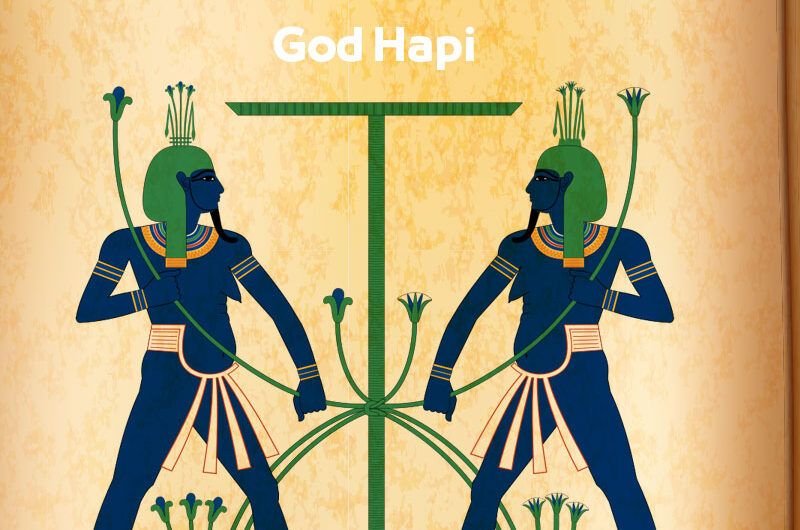God Hapi “Nile god” | Facts Ancient Egyptian Gods and Goddesses | God of fertility, prosperity and happiness in Pharaonic Civilization & Most Important Ancient Egypt Deities, Mythology Symbols, Definition, Temple, Photo and more…
symbol of the Nile, fertility, prosperity and happiness among the pharaohs and the ancient Egyptians | Facts and history of gods and religious beliefs in the civilization of ancient Egypt and more.
The god Hapi is a sacred and popular deity in the ancient Egyptian religion. Hapi is the name of the Nile itself in prehistoric times, so that this name turns into an incarnate deity that represents floods and puts silt on the banks of the Nile, filling Egypt with goodness, fertility and prosperity. And the word Hapi means bringer of happiness.
Hurghada lovers Offer Luxury Hurghada to Pyramids Tours | El Gouna to Pyramids Tours | Makadi bay to Pyramids Tours | Sahl Hasheesh to Pyramids Tours | Soma bay to Pyramids Tours .
God Hapi
The God of the Nile is a hermaphrodite god, but he was referring to fertility.
This divine sex was a source of reverence for sex in everyday life or made it a worldly act for reproduction and pleasure.
Attractive women were the most fertile, and there were little women in Egypt who exposed themselves through some sort of blue dress that looked like a fishing net and put the mark on their breasts or thighs.
Where did the god Hapi live? What is his place of worship?
- The god Hapi took a residence in a cave on the island of Bega in Aswan, and this island is near the island of Philae, and this cave was protected by a sacred snake, and the ancients believed that this cave was the source of the waters of the Nile.
- The god Hapi was worshiped in places where the river’s water current was strong, such as Jabal al-Silsilah and the source area of the river.
What is the importance of the god Hapi in Pharaonic history?
- The Egyptians called the god Hapi also the master of fish and birds, the maker of barley and wheat, and the master of the river, because of the good that the flood brought to all beings in Egypt.
- The ancient Egyptians believed that the god Hapi was a friend of the god Geb (the god of the earth), and the god Niber (the god of grain), and the three were cooperating in achieving agricultural prosperity and well-being for Egypt.
- There is no temple for the god Hapi, but there are many statues and inscriptions of him in other temples all over Egypt, and the ancient Egyptians held annual festivals to celebrate his arrival and with him the flood of the Nile, even if his reverence stops to this extent. Some people even made his worship above the worship of the sun god The great Ra.
- The ancient Egyptians used to throw a live girl into the Nile to thank the god Hapi for his favors, and she was called (the bride of the Nile), and with the development of cultures, this ended and she was replaced by a wooden bride, and this also ended, although the Egyptians are still celebrating seven thousand years ago and until now the feast of fulfillment Nile in August every year.
What is the form in the Pharaonic civilization?
- is a male deity, but his depiction was in the form of a hermaphrodite, with hands and legs with strong muscles like a man, indicating strength and toughness, while his stomach and breasts belong to the female form, so his stomach was swollen and his breasts were hanging down, because the ancients believed that the waters of the Nile flowed from his chest.
- wears a false beard as well as a wig adorned with a cobra snake
- The skin of the god Hapi appears in the drawings in green or blue to represent the color of water.
- The depiction of the god Hapi changed according to the nature of his place of worship. In Lower Egypt, the god Hapi appeared wearing a papyrus plant attended by frogs. In Upper Egypt, he wore a lotus and was surrounded by crocodiles.
- Since the era of the Nineteenth Dynasty, the god Hapi began to be depicted sitting on the throne and tying the lotus flower and the papyrus plant together, in reference to the unity between Upper and Lower Egypt, in which he had a prominent role.
- In some rare images, the god Hapi appears in the form of a hippopotamus.
- also appears in many drawings carrying offerings or pouring water.
The relationship of the god Hapi with the god Horus
- There is a myth called (canopic pots) dating back to the Ptolemaic era, claiming that the god Hapi is the son of the god Horus, the son of the gods Isis and Osiris, and that he is one of the four sons of Horus (Duamut F, Qabh Sinwaf, Amesti, Hapi), and each of them has a role in the process of preserving organs The deceased after his death, and Hapi’s job was to protect the vessel containing the viscera.
- this myth does not exist in the Pharaonic history, although the canopic vessels did exist.

